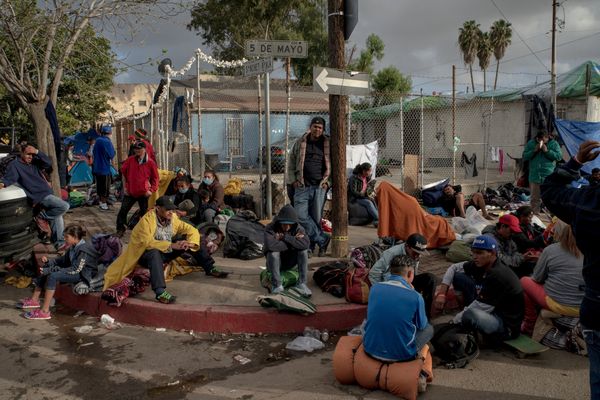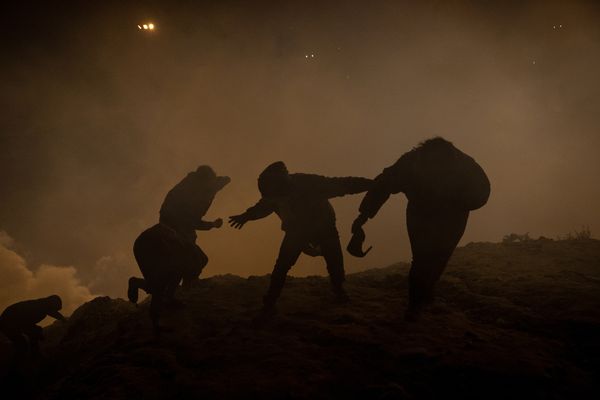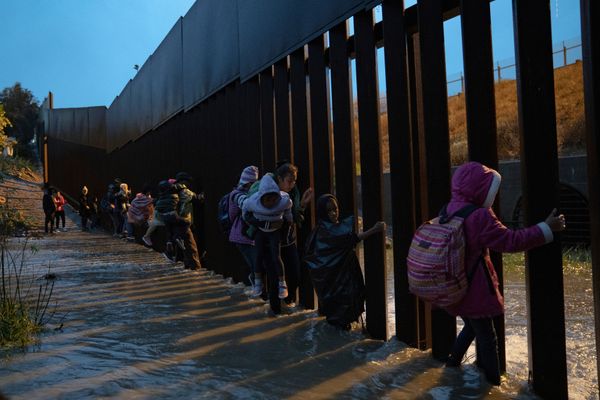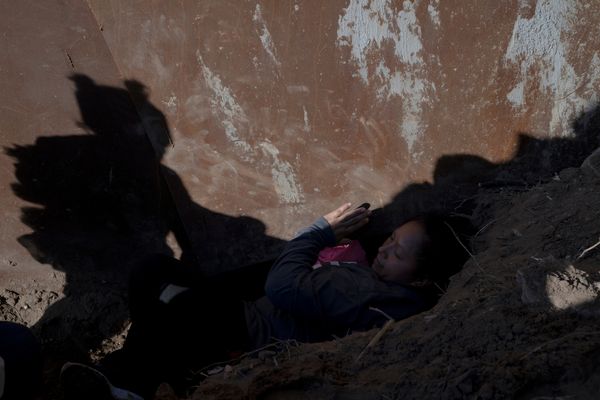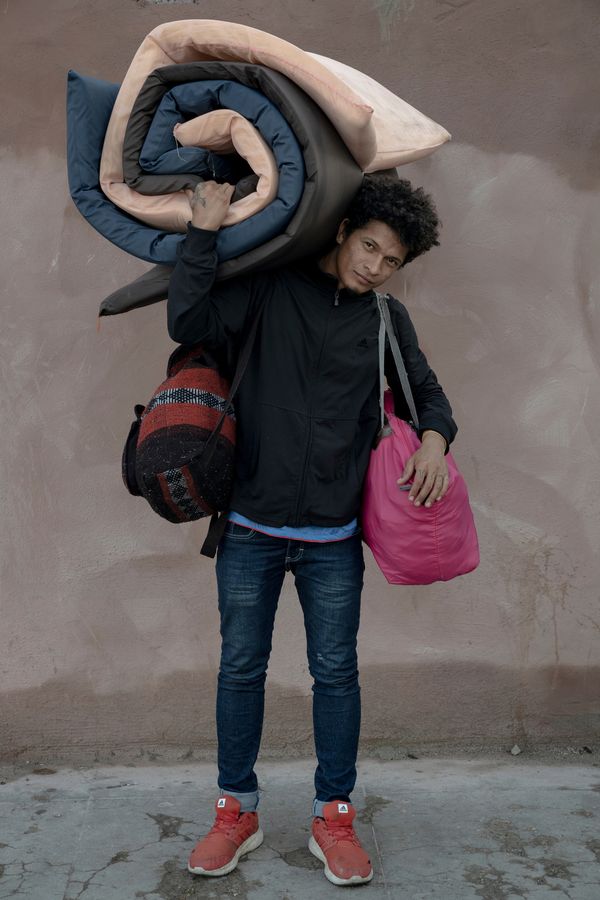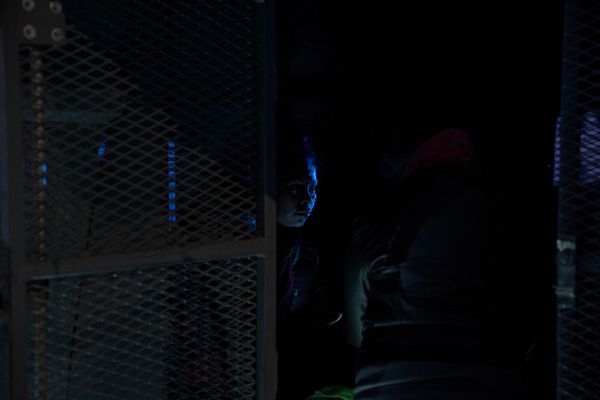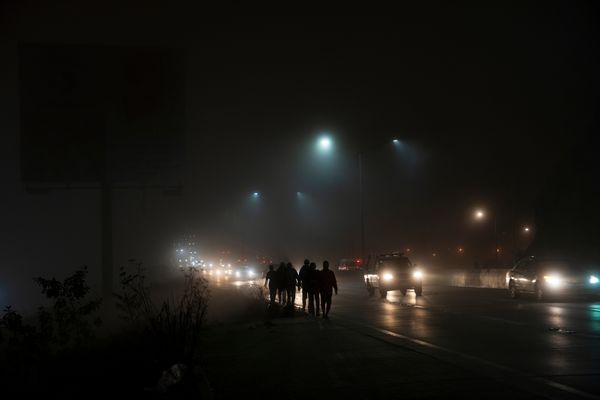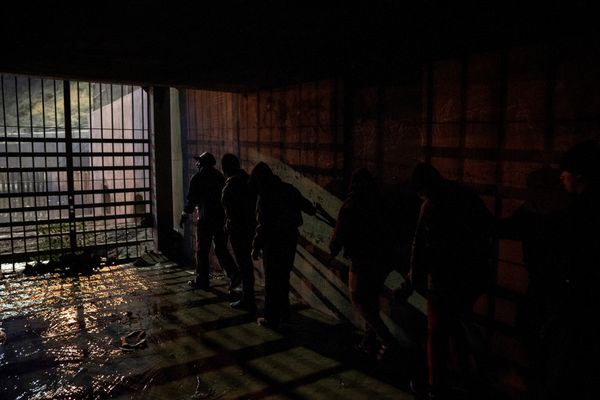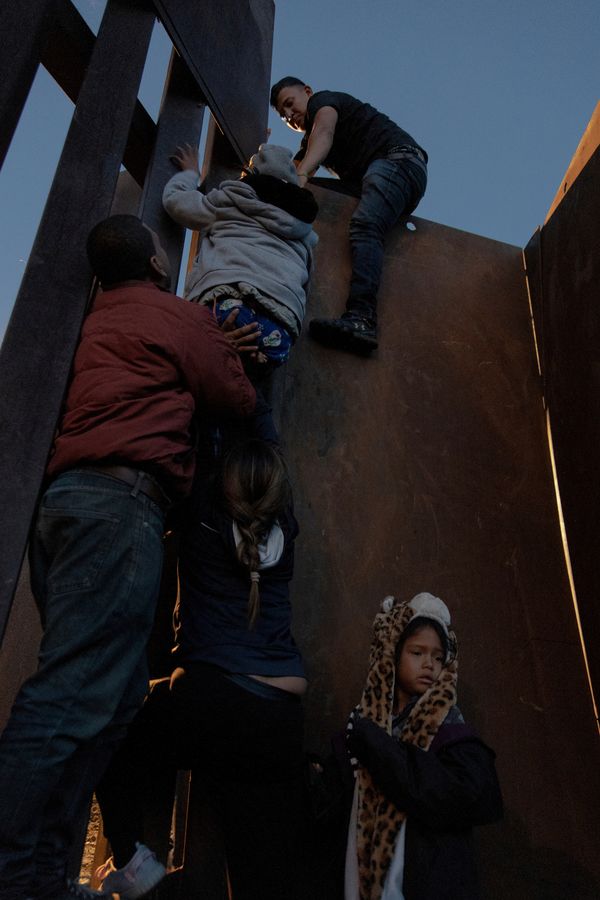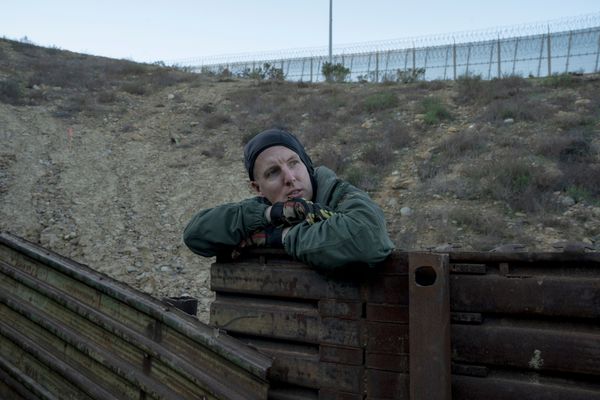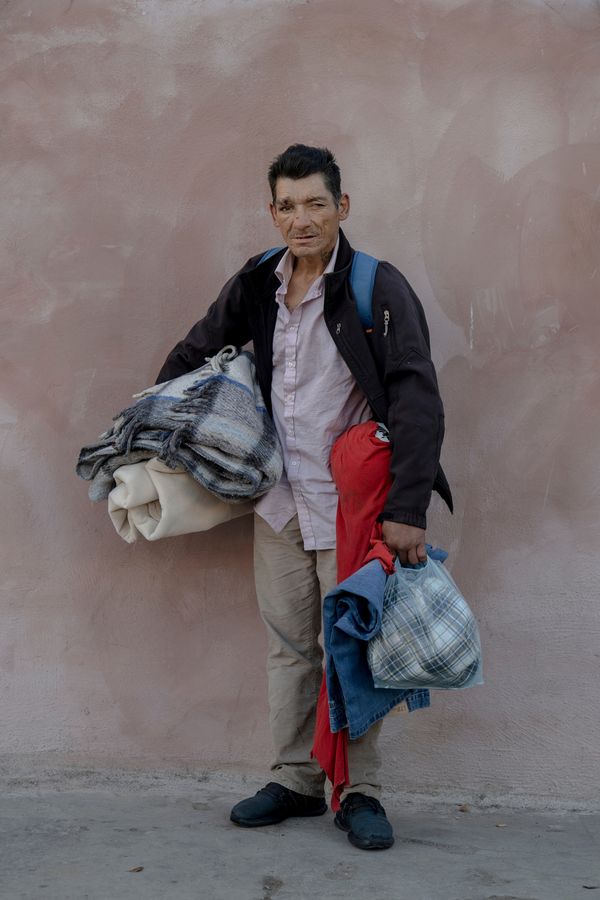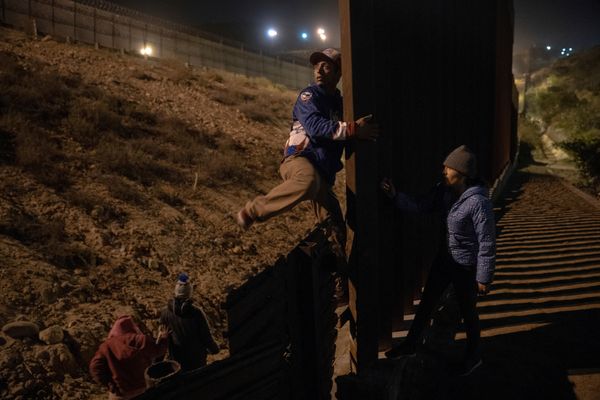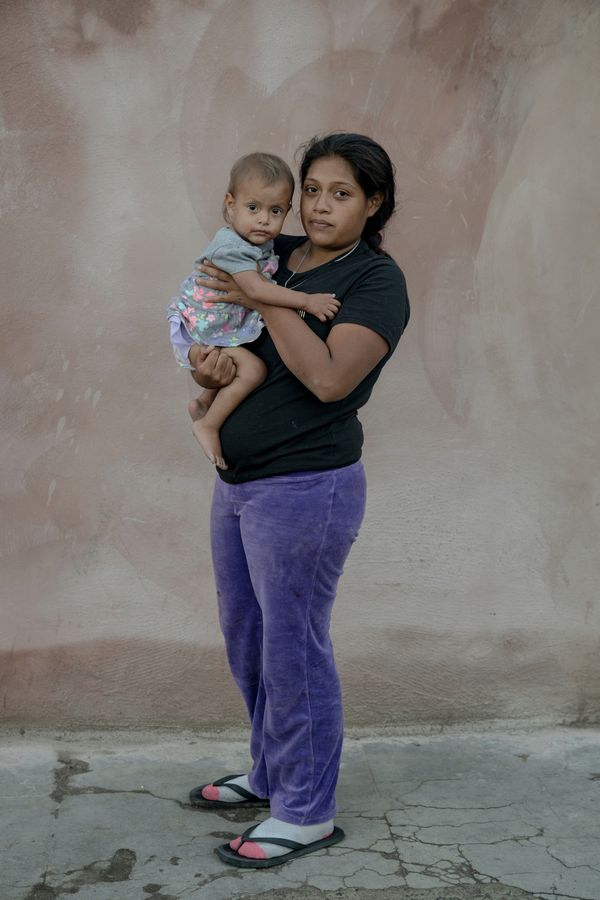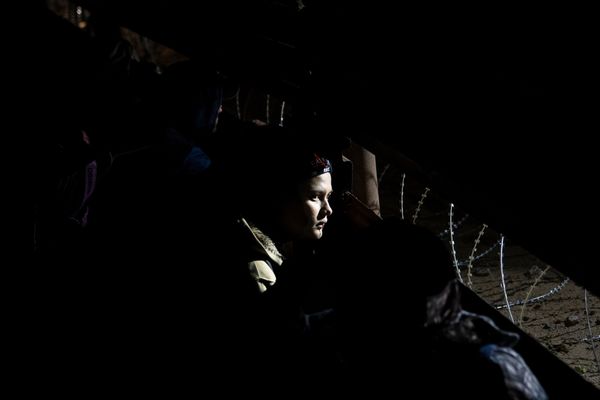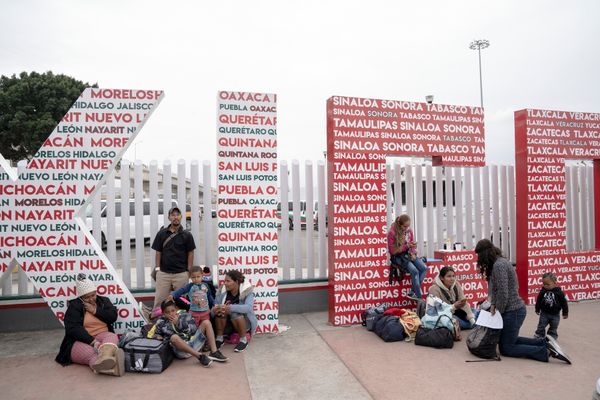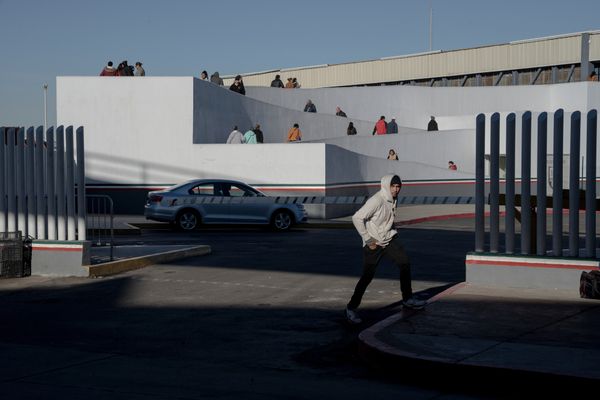Caravana Migrante
-
Dates2018 - Ongoing
-
Author
- Location Tijuana, Mexico
Until it reached the US border in mid-November, the migrant caravan that set out from San Pedro Sula, Honduras, on October 12 had largely been a success. Leaving that crime-benighted city with only 160 members, the caravan ballooned to ten times that size by the third day, as people streamed in to join from all over Honduras and neighboring El Salvador. By the time the group reached southern Mexico, having overwhelmed authorities at both the Guatemalan and Mexican borders, the United Nations estimated that there were over 7,000 members—easily the largest caravan yet to come out of Central America. The unprecedented spectacle quickly captured the world’s attention and became a symbol for what is becoming known as the ‘Central American Exodus’—the mass movement of people fleeing staggering, relentless violence and abject poverty in the ‘Northern Triangle’ countries of Honduras, El Salvador, and Guatemala.
In the US, however, the caravan was becoming a symbol for something else. Seizing on the optics of 7,000 bedraggled people marching northward as incontrovertible proof that America was under siege by vast mobs of mystery invaders, President Trump turned the caravan into the cornerstone of his pre-midterm election rhetoric. For Trump and the Republicans, the caravan was the perfect political football: a way to keep America’s attention focused on their number-one issue, immigration, while simultaneously distracting from the myriad scandals Washington DC seemed to be producing en masse. Wild, unfounded claims erupted from the White House—that this was MS13 on the warpath, or that Islamic terrorists were using the migrants as cover, or that the whole thing was an elaborate Democratic ploy concocted by George Soros.
Meanwhile, the caravan, undaunted by the sudden spotlight, forged ahead through Mexico. Morale was high—though exhausted, the migrants retained an optimistic mood, certain that despite Trump’s obvious disdain they would make it to ‘el otro lado,’ the other side. Repeated, failed attempts by Guatemalan and Mexican authorities to divide the group had engendered a deep camaraderie, an abiding belief that the caravan was inviolable, an ethos that nobody was to be left behind. Buttressing this internal strength was the widespread support of the Mexican people. In nearly every town the caravan entered they were greeted with donations of food, water, and clothing, and provided with ad-hoc shelters, medical services, and legal counsel. In the Oaxacan town of Juchitan de Zaragoza, the municipal government even organized a solar-powered viewing of the Disney film ‘Coco.’
Then, in mid-November, the caravan arrived in Tijuana, and almost immediately the mood darkened. The migrants saw the US border for the first time: the floodlights, cameras, motion sensors, the two imposing metal walls festooned by razor-sharp concertina wire, the rigorous patrols of the Customs and Border Protection officers. Tijuana’s mayor, Juan Manuel Gastelúm, immediately declared a humanitarian crisis, and the city opened the Benito Juarez sports

complex—only meters from the border—as a stopgap shelter. But the migrants, some 6,000 people, easily overwhelmed the complex, which reached double its capacity almost instantly. Tents covered nearly every free inch of the basketball courts, the baseball fields, the soccer pitches. Tarps were strung between the trees and woven through bleachers to create makeshift roofs, while narrow footpaths were forged through the warren of tents. The camp spilled onto the adjacent street, Avenida 5 de Mayo, with cobbled-together shelters extending the entire length of the block. Respiratory infections, tuberculosis, chickenpox, skin infections, and lice began to spread. To make matters worse, on November 26, a contingent of migrants, fed up with the deteriorating conditions inside the camp, marched on the border wall and were met with tear gas and rubber bullets. The intransigence of the US president, the less-than-warm reception by the mayor of Tijuana and many of the city’s residents, the seemingly-impermeable border, and the squalid conditions of the camp all compounded to thoroughly demoralize the caravan—and then the rain began. For two days it rained furiously, turning the roofless camp into a vast soup of mud, garbage, sodden blankets, caved-in shelters, and human waste. The rain made the sports complex—already a dismal living situation—completely uninhabitable, and when it finally abated city officials moved in to clear the camp.
In a sense the dismantling of the Benito Juarez camp marked the end of the united migrant caravan: it had run at full force against the American border and broken with the impact. Several thousand of the migrants accepted the city’s offer to relocate to a new shelter, some thirty kilometers south of the border in an poor, isolated neighborhood in East Tijuana. Others, refusing to relinquish their proximity to the United States, remained near Benito Juarez, eventually opening a new shelter in a warehouse nearby. Many people simply dissolved into the city, finding accommodation in churches and at the many smaller migrant shelters scattered throughout Tijuana. And some, desperate to plead their asylum cases to US officials, hiked through the steep, dangerous ravines of Western Tijuana to the border wall, where they climbed over and into the United States, surrendering themselves to waiting CBP officers.
What remains of the caravan is now living a confused and precarious existence in the shadow of the American border. Trapped between life-threatening violence and an unsympathetic, byzantine US immigration system, the migrants are in limbo—uncertain what lies ahead for themselves and their loved ones, unsure who to trust, and bewildered by the whirlwind of false information and rumors in constant circulation. After a grueling 4,000 kilometer journey, the dream of America is agonizingly close. At the Tijuana beach, where the border fence extends some 100 meters into the Pacific, migrants often walk to the water’s edge and peer through the steel slats of the fence to the US soil on the other side. They can reach through and touch the country that they hope will give them sanctuary, a final respite from the chaos of their homelands. But for now, theirs is only an American pipe dream, tangible enough to pull at the soul, but illusory enough to crush it.
Text - Fletcher Reveley
Photos - Kitra Cahana
